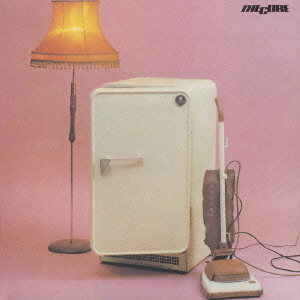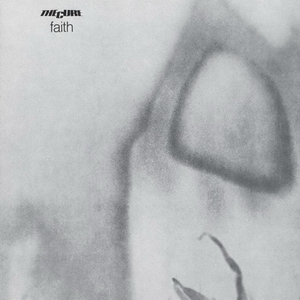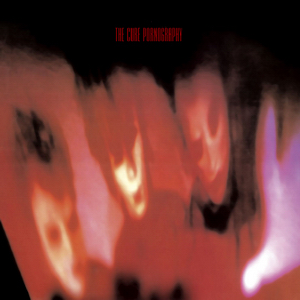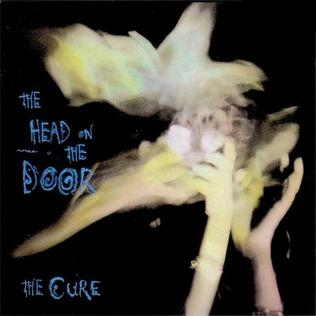I will say it with no shame. Even having spent over half my life being involved in something that can be as cloying and judgmental as punk, The Cure are one of my all time favorite bands. I started listening to them seventeen years ago, when I was in seventh grade. I have never stopped. I guess I haven't kept up with their newer records, but their classic ones are still on relatively heavy rotation in my life.
Robert Smith is a genius songwriter, and was an early genderqueer icon in my life. Sad songs written by an androgynous tender dude were probably exactly what I needed at fourteen, when I was kind of learning how to be a person who feels in a crazy world.
Let's go through their (in my opinion) essential albums:
1979 - Three Imaginary Boys: This was repackaged with a different title, different cover artwork, and slightly altered tracklisting as Boys Don't Cry in the US. This is the version I primarily grew up with. I bought this record when I was fourteen, after hearing my best friend at the time listened to the record's final song "Three Imaginary Boys" over and over. The music is relatively light and poppy, with some darker lyrical themes thrown in. In my opinion, the last half of the record was always a hint at greater things to come. I don't love this as much as I love some of their other records, but this one is still essential. I fell asleep to it often, the year I was in eighth grade, only to be awoken in a start by the bloodcurdling scream at the end of Subway Song.
 1980 - Seventeen Seconds: This record would be the start of the musical direction that The Cure is now known for. The music is still somewhat poppy, but with darker, slower, melodies, synthesizers sparse, gloomy instrumental tracks and darker lyrical content. One reviewer described the record as a "sad Cure, sitting in cold rooms, watching clocks" Legends around the recording of the record say it was recorded in seven days, on a budget of three thousand pounds, and some of the instrumental tracks were meant to be longer, but they ran out of tape whilst recording, and couldn't afford to do them over. I still think this record is great, and revisit it every so often. It's lost none of it's power or atmosphere in thirty years. It's a perfect soundtrack for grey, dreary days.
1980 - Seventeen Seconds: This record would be the start of the musical direction that The Cure is now known for. The music is still somewhat poppy, but with darker, slower, melodies, synthesizers sparse, gloomy instrumental tracks and darker lyrical content. One reviewer described the record as a "sad Cure, sitting in cold rooms, watching clocks" Legends around the recording of the record say it was recorded in seven days, on a budget of three thousand pounds, and some of the instrumental tracks were meant to be longer, but they ran out of tape whilst recording, and couldn't afford to do them over. I still think this record is great, and revisit it every so often. It's lost none of it's power or atmosphere in thirty years. It's a perfect soundtrack for grey, dreary days. 1982 - Pornography: What to say about this record? It's nearly perfect. It's my understanding that it was pretty universally panned by critics upon it's release. Legends around the record's recording have the band consuming a pot of mushroom tea every night at the beginning of the recording sessions. They must have had some serious demons to exercise, becaue the resulting record is bleak, scary, apocalyptic, and beautiful all in one. The opening guitar riff on "One Hundred Years" is unforgettably chilling, as are the opening lyrics "It doesn't matter if we all die" This record is the soundtrack for angst and dread. The tour for the record reportedly ended with Robert Smith, and Bassist Simon Gallup getting in a fist fight and the band breaking up, only reuniting at the urging of Robert Smith's Father, who reportedly told Smith that people had bought tickets to shows, and he owed it to them to finish the tour. Seriously, I don't think there is one bad song on this record. Maybe it's a testament to this record's power, that when I was fifteen I recorded this on tape (again, remember those) from a friend and listened to it until it broke. I didn't want to borrow the CD from my friend again, so I painstakingly found where the tape had broken, heated up a pair of pliers with a cigarette lighter, and melted the tape just enough, so it held together long enough to record on another tape, which i listened to for years, until finally breaking down and getting a copy of the 2005 remastered edition on compact disc. How's that for DIY?
1984 - The Top: I never owned a copy of this record until I was in my mid twenties. For some reason I remember it always being at least ten dollars more than every other Cure record, and I could never find a copy of it used. It's a good record. It marks a transition phase for The Cure. The nightmarish atmosphere of pornography is completely gone. Lineup troubles led to Robert Smith essentially writing and recording almost all of this by himself with a session drummer. It's good, a shift from dark gothic rock themes to more of a light almost psychedelic pop sound. You can probably tell that I don't have many memories of listening to this record. I did used to listen to a live version of the song "Dressing Up" when I would feebly attempt to tease my hair to go out.
1985 - The Head On The Door: Another shift in sound. I would best describe this record as "dark pop" A good number of the songs are slower, and the lyrical content is still disturbing at some points. I found a copy of this record on cassette for three dollars at a hole in the wall record shop in Minneapolis. This record marks the rejoining of bassist Simon Gallup, and was the first record to feature second guitar player Porl Thompson as a regular member. Some of this record's stand out tracks were compiled on Standing On A Beach, which I listened to regularly as a teenager. I don't claim to be an expert lyrical analyst, but I prefer to think that Kyoto Song is about being fucked by a strap on. One can hope.
I've now been writing this for several hours, and need a break. I will start fresh maybe later tonight with some notes on Kiss Me Kiss Me, Disintegration, and Wish.
Thanks for reading.





No comments:
Post a Comment